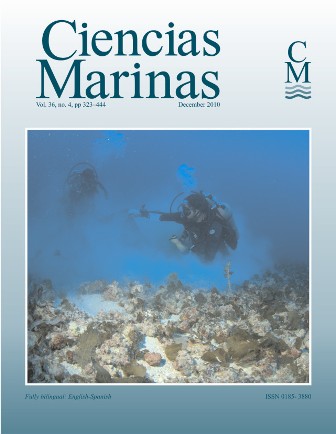Spatial and temporal composition of the avifauna from the barrier islands of the San Ignacio-Navachiste-Macapule lagoon complex, Sinaloa, Mexico
Main Article Content
Abstract
We analyzed the composition and abundance of the avifuana inhabiting the barrier islands of the San Ignacio-Navachiste- Macapule lagoon system from July 2006 to June 2007. Species richness and relative abundance were determined for the whole complex and for each island. The cumulative abundance was 55,849 individuals belonging to 71 species, 54 genera, and 26 families, distributed as follows: 51% resident species, 5% summer migratory species, 41% winter migratory species, and 3% transient species. Families with the highest species richness were Laridae (14 species, 20%), Scolopacidae (12 species, 17%), and Ardeidae (10 species, 14%). The Pelecaniformes group had the highest cumulative abundance (38,661 individuals, 69%), whereas the anatids had the lowest cumulative abundance (0.6%). The species with the highest relative abundance were Pelecanus occidentalis (16,355 individuals, 29%), Phalacrocorax auritus (13,209 individuals, 24%), and Fregata magnificens (5,964 individuals, 11%). The 68 remaining species represented only 36% of the cumulative abundance. Nineteen bird species used the islands as breeding sites, and the ardeids represented the most important group with 12 species (60%). Pajaros and San Ignacio islands were the main breeding sites within the insular system, particularly Pájaros due to its high species richness and abundance. This study highlights the importance of the barrier islands of northern Sinaloa as breeding areas for resident and migratory species.
Downloads
Article Details
This is an open access article distributed under a Creative Commons Attribution 4.0 License, which allows you to share and adapt the work, as long as you give appropriate credit to the original author(s) and the source, provide a link to the Creative Commons license, and indicate if changes were made. Figures, tables and other elements in the article are included in the article’s CC BY 4.0 license, unless otherwise indicated. The journal title is protected by copyrights and not subject to this license. Full license deed can be viewed here.

